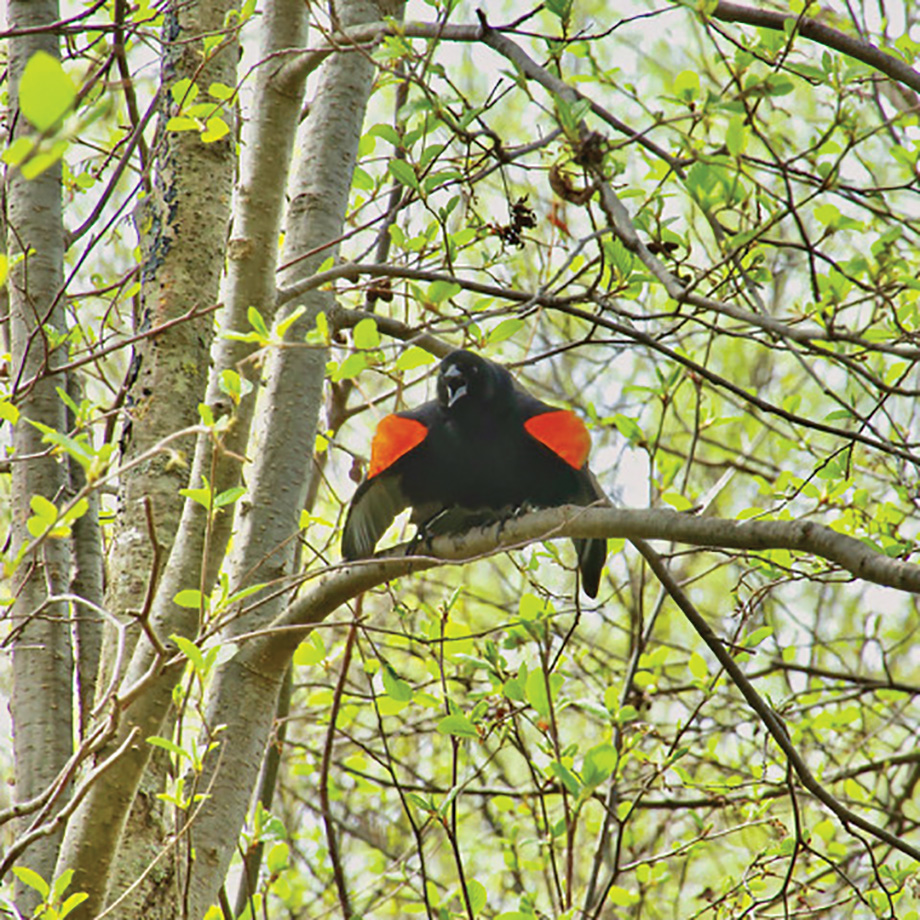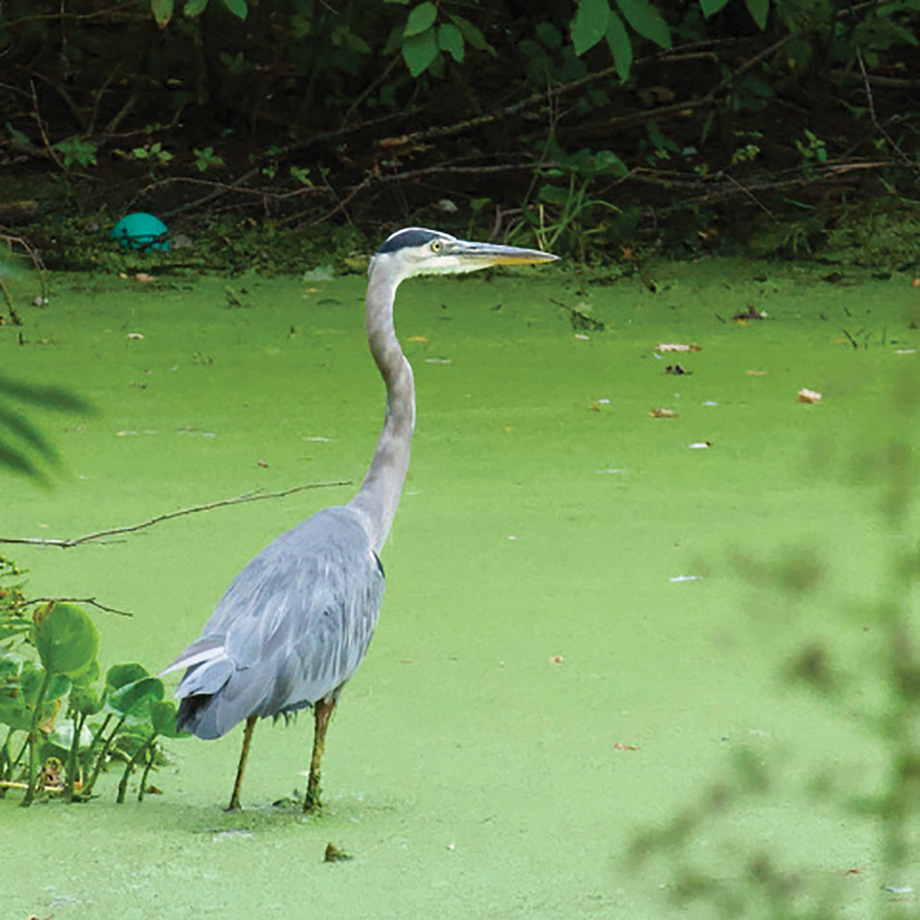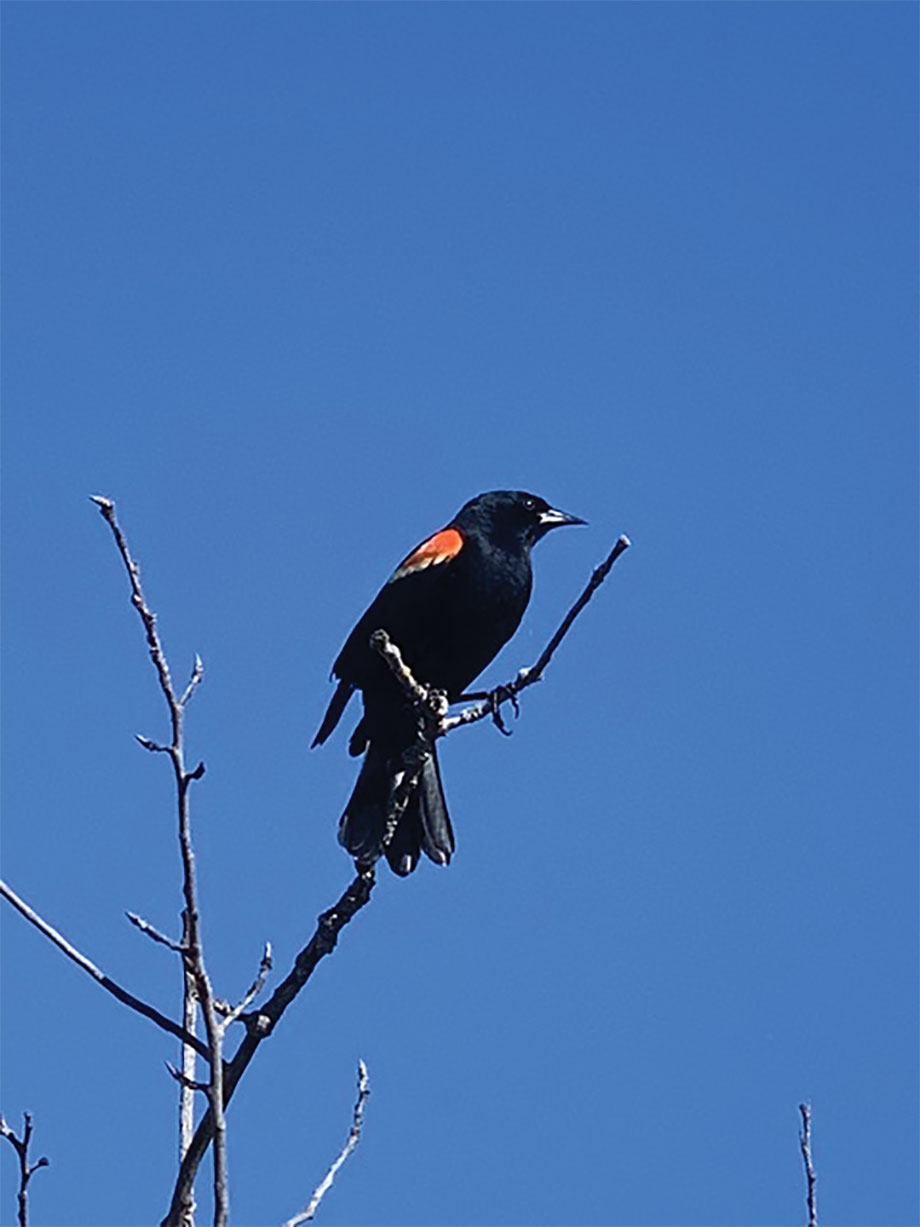
Photos: Dana Boyle
Grab your bins and apps, it’s birding season at Tamarack Nature Preserve.
For many in Minnesota, the sounds and sights of a robin or a goldfinch often herald early hints of spring; relief from Earth’s quiet winter slumber. At Tamarack Nature Preserve in Woodbury, volunteers have been busy cleaning out wood duck houses and sprucing things up ahead of the arrival of warblers, woodcocks, green herons, egrets, cedar waxwings and catbirds, among so many other birds that will soon call this great birding spot home.
“The preserve is a hidden treasure, without a building; it’s not your typical park,” says Minnesota naturalist and Woodbury resident Dana Boyle. The 169-acre wetland is surrounded by a bog or a fen, boardwalks and woodland trails, perfect for picking up birding as a hobby this summer.
“Common birds like the red-winged black bird are actually one of the first signs of spring. You hear ‘marieeee, marieeee’ all over the wetland. One of the best times for birding here is the month of May because it’s a celebration of birds; there’s a feast for the eyes and ears,” Boyle says. Just don’t forget your “bins.”
Bins, or binoculars as birders call them, along with a field guide or an app like Merlin Bird ID, are great tools to help a novice start noticing and identifying some of the melodious creatures that make Tamarack Nature Preserve their home.
“Birding” is the act of identifying and observing wild birds in their natural habitat. It increased in popularity among those looking for an outdoor hobby during COVID-19. People of all ages looked and listened for opportunities to get out of the house, making an impact on scientific discovery at the same time. “It’s a simple and inexpensive way to reconnect with nature,” Boyle says.

Apps can help new birders identify what they hear or see. And for those interested in charting bird appearances, an app can track when and where a species is located, plus it connects others interested in spotting them, too. Boyle used the app iNaturalist to record her June 5, 2022, sighting of a hooded merganser at Tamarack Nature Preserve. Last May, she identified the American redstart at the preserve, a member of the warbler family, a sure sign of spring, she notes. Boyle took several photos of both birds, which she uploaded to the app, so others could see her chronicles. She says, “[The apps are] amazing because you don’t have to know a ton about what you’re seeing or even hearing.” Cell-phones use sound-mapping technology, bringing up a search and suggestion of a bird just through the song it captures along the trail.
Another way to engage in this detailed hobby is to go out with someone who has been birding for a little longer. But there are protocols: Stay as quiet as you can, listen, be patient and look deeper into nesting areas without getting too close or disturbing the nature around you. Boyle says it’s important not to be intimidated if you forget what you learned last time or even last year; she says, “There’s a whole art to birding, including utilizing mnemonics. The barred owl sounds like it’s saying, ‘Who, who … who cooks for you.’” Many websites and birding apps note these mnemonics to help people with identifying different birds.
Getting started can be as easy as putting up a platform feeder in your yard to get more familiar with different species. As a competitive hobby, Boyle says serious birders will start a list of the species they want to see beginning in January, traveling all over the country to visit locations others have identified. They check it off their list and keep going.
To keep your own list, start by marking down (ticking) your spark bird (the species or moment that triggered your birding obsession). A good birder will pick up on some key birding terms, like SOB (the spouse of birder) or the one often left at home in search of a crippler (a beautiful bird) or mega (a bird thought to be a very rare site).

While you walk through one of the southernmost stands of tamarack trees in the state, look high and low for warblers, who love tamaracks; just be careful not to leave with warbler-neck from stretching too hard, another term, which birders say is a real thing.
Boyle says the biggest time for warblers at Tamarack Nature Preserve are the months of May and October. Warblers’ main food source is insects, which they follow on their migration north, flashing their brilliant, molted colors along the way. When talking about birding, a certain or rare warbler sighting sits particularly well with other birders.
At Tamarack Nature Preserve, there’s a group of birders who search for warblers and other species. For Boyle, who has been birding with a group of engineers, technology specialists and a retired physician for about five years, it’s a passion. “We call ourselves the Volunteer Stewards of Tamarack Nature Preserve,” she says.
As part of their birding hobby, the Stewards partnered with the City of Woodbury to get new signage and boardwalks to help others navigate the preserve and to keep it free and open to the public. If you’re lucky, Boyle says, you’ll come upon one of the wood duck houses on “jump day”—a day after they’re born, ducklings hop out of their houses, and, because they can’t fly yet, they fall from a perch as high as 65 feet off the ground. As they hit the ground, their tiny, light bodies bounce back up, jumpstarting their digestive system. From there, they beeline toward water, where their mother begins teaching her babies to swim. But you’re going to want to be up early. The best time to observe jump day is to be ready by 7 a.m. So grab a cup of shade-grown coffee, a planting method that preserves forest canopies and in turn helps more than 42 North American species of migratory songbirds survive winter, and travel the trail, stretching your neck as you go.






















